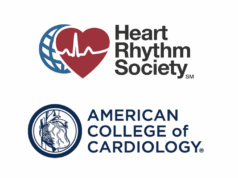
St Jude Medical has announced CE mark approval of the Allure Quadra MP cardiac resynchronisation therapy pacemaker (CRT-P). The Allure Quadra MP is the world’s first quadripolar CRT-P with the MultiPoint Pacing option, a technology that has been shown to enhance patients’ response to cardiac resynchronisation therapy (CRT), potentially improving quality of life for patients with heart failure.
The MultiPoint Pacing technology enables physicians to pace multiple locations on the left side of the heart, giving the clinician more choices to best optimise CRT pacing based on patient need and reducing the rate of CRT non-responders, as well as the likelihood of costly and invasive lead revision through a second intervention procedure.
A recent study demonstrates that MultiPoint Pacing technology may be particularly beneficial in patients not responding to traditional bi-ventricular pacing therapy, which accounts for approximately one third of the total population of patients receiving cardiac resynchronisation therapy. The technology, developed by St Jude Medical, has demonstrated a 19% improvement in responder rates for patients with MultiPoint Pacing at 12 months compared to traditional methods of CRT. Additionally, research found improvement in left-ventricular function in patients who were already classified as a responder to CRT therapy.
The Allure Quadra MP CRT-P is designed to work with the Quartet left-ventricular lead, which has four electrodes for different pacing configurations to help manage heart failure patients. The MultiPoint Pacing capability allows physicians to program simultaneous or sequential delivery of two left-ventricular pulses at two different anatomical locations per pacing cycle, rather than the standard single pacing pulse, which can result in more effective resynchronisation, potentially leading to better clinical outcomes compared to single site pacing.
The MORE-CRT prospective, randomised clinical trial of more than 1,000 patients has already demonstrated a 40% relative risk reduction of lead-related complications for patients implanted with the Quartet lead. To date, more than 100 clinical publications have provided broad clinical evidence supporting the advantages of quadripolar technology from St Jude Medical.
The CE mark announcement follows data presented during the XVI International Symposium on Progress in Clinical Pacing (Rome, Italy, 2–5 December 2014). Data shows that MultiPoint Pacing improved left-ventricular function for both responders and non-responders compared to traditional CRT. Additionally, a study suggests that multipoint left-ventricular pacing may reduce the burden of premature ventricular contractions, potentially improving the effectiveness of CRT.
“From our initial experience, we think MultiPoint Pacing improves cardiac function, resulting in better resynchronisation and could be a further advantage of CRT,” says study investigator Francesco Zanon, director of the Electrophysiology Unit Department of Cardiology from Santa Maria della Misericordia Hospital in Rovigo, Italy. “We observed significant improvement over traditional CRT pacing, and therefore believe this technology could have wide application because it is accessible for all CRT implanters.”
“The St Jude Medical quadripolar pacing system has been successfully designed for optimised outcomes, now adding MultiPoint Pacing as an additional set of tools designed to decrease the rate of non-responders and improve clinical outcomes even in difficult to treat patients with ischemic heart disease,” says Eric S Fain, group president of St Jude Medical.












